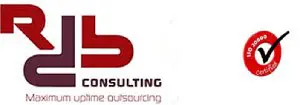Oracle and Blade Servers – The PRO’s and CON’s
An article by RDB Consulting
BLADE Servers and Oracle
Blade Server Advantages
- The idea is to reduce the total cost of ownership by moving from a
proprietary UNIX architecture to commodity architecture.
- De facto platform for grid computing.
- Easily scalable grid computing.
- Server consolidation/centralization, reduction in complexity, greater
control by use of blade servers and enclosures.
- Oracle database RAC scalability.
- Suitable for applications that do not require the symmetric
multiprocessing (SMP) capabilities of large mid-range servers.
- Perfect for OLTP Oracle RAC systems that do not require multiple CPU
resources.
- Blade servers are essentially a set of compact motherboards.
- Easy addition/removal of blade server ‘blades’ or motherboards.
- Blade servers offer ‘plug and play’ servers for server farms.
- Blade servers solve the ‘chaos’ situation in data centres where one
single wire or plug in the data centre could get enmeshed into millions
of other wires.
- Reduce the space constraints in data centres.
- Blade servers have a common power supply and that saves on power
management costs.
- Blade servers have a common air cooling system and that saves on
coolants for each individual server and makes server cooling easier to
manage.
- Blade servers save rack space, by having a lot of compact blades on
the same blade server, enabling cheaper and better hosting.
- Theoretically, blade servers offer cross vendor compatibility in a blade
server farm.
- All of the major hardware vendors offer blade server hardware, at far
lower costs than traditional UNIX servers.
Blade Server Disadvantages
- Not new technology, blade servers simply reinvent the same
technology used by mainframes ages ago.
- A blade server grid would not be appropriate for an Oracle RAC
implementation that performs parallel query operations.
- A blade server would not be appropriate for a Data Mart or Data
Warehouse environment which typically requires many fast CPU’s for
quick parallel query performance.
- Blade servers have a single power supply and this creates a common
failure point.
- Blade servers have a single cooling system and this could create the
same cooling problem as in mainframes.
- The original promise of having ‘cross vendor’ blades in a blade server
environment has not been achieved yet.
- The key component of blade server compatibility is the integration of
the SAN switch vendor’s products with that of the blade server vendor.
- There are claims that the costs for a rack of blade servers, despite their
limited functionality, is often as high as the cost of a fully configured
rack mount server with similar specifications.
- Limited I/O — In a blade server, the I/O paths are shared, leading to
limitations in the number of peripheral I/Os that can take place, such as
disk I/O or server-to-server network communication.
- Limited flexibility — Blade servers cannot be retired and replaced in the
same way regular rack mount servers can, and there is a loss of
flexibility in the way servers can be interconnected.
- Blade servers have a performance disadvantage when compared to
high-end servers and mainframes, due to the fact that they often
employ low-power CPUs.
- High power CPU’s in a confined environment create heat dissipation
problems.
- Blade processors typically don’t deliver the performance of their juiceguzzling
SMP cousins.
November 2007 Contact RDB Consulting for MS-SQL support!
